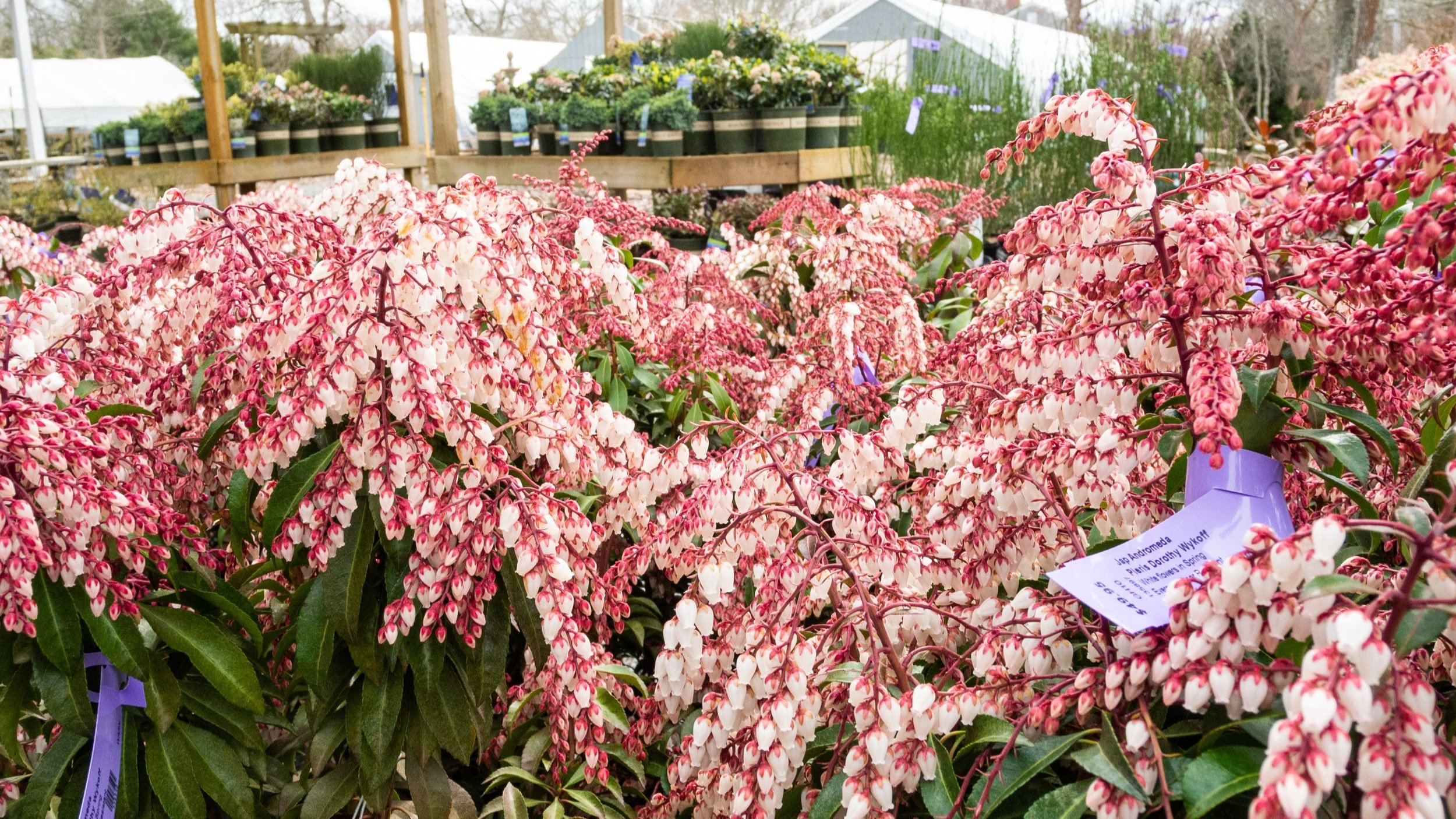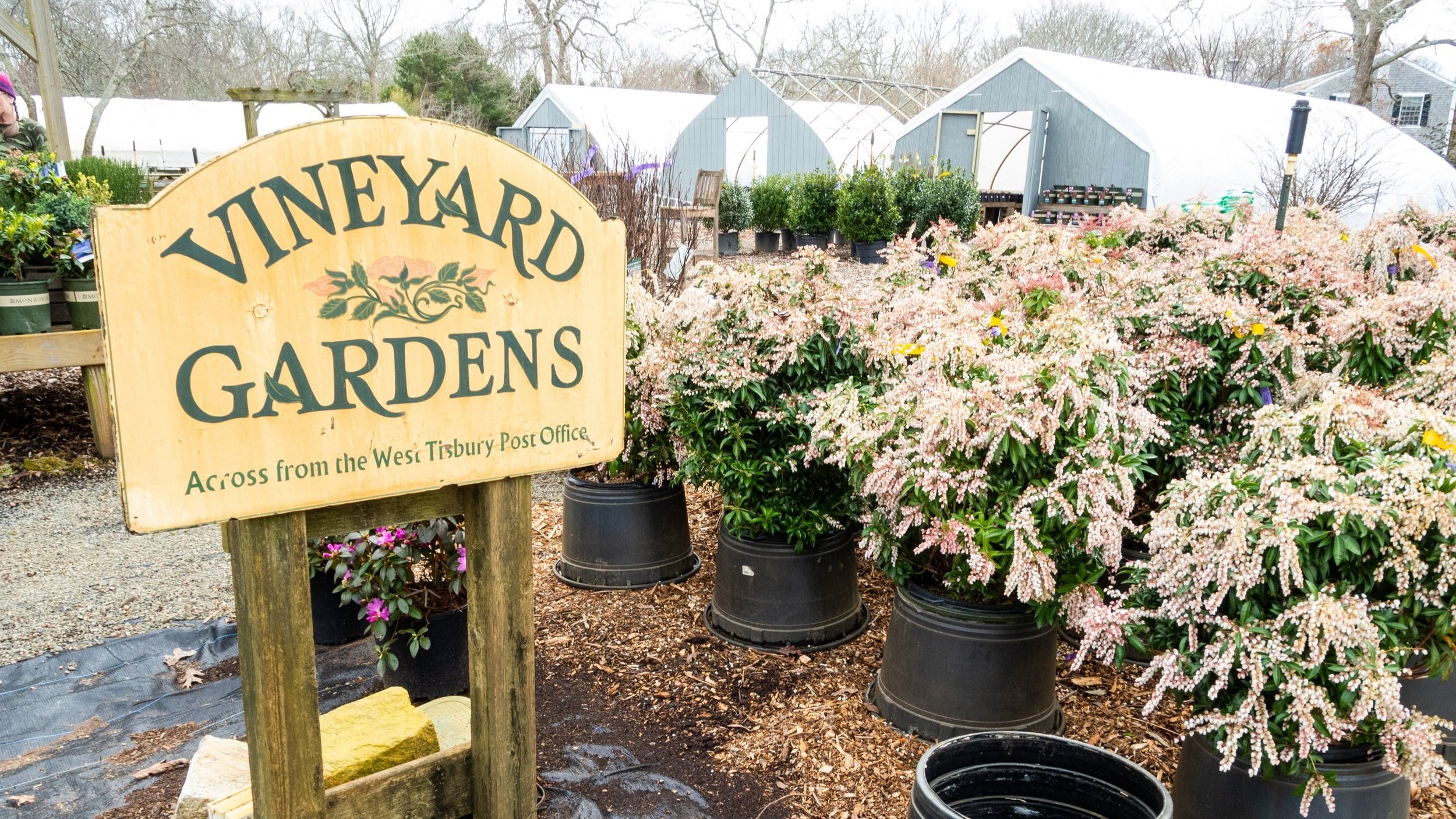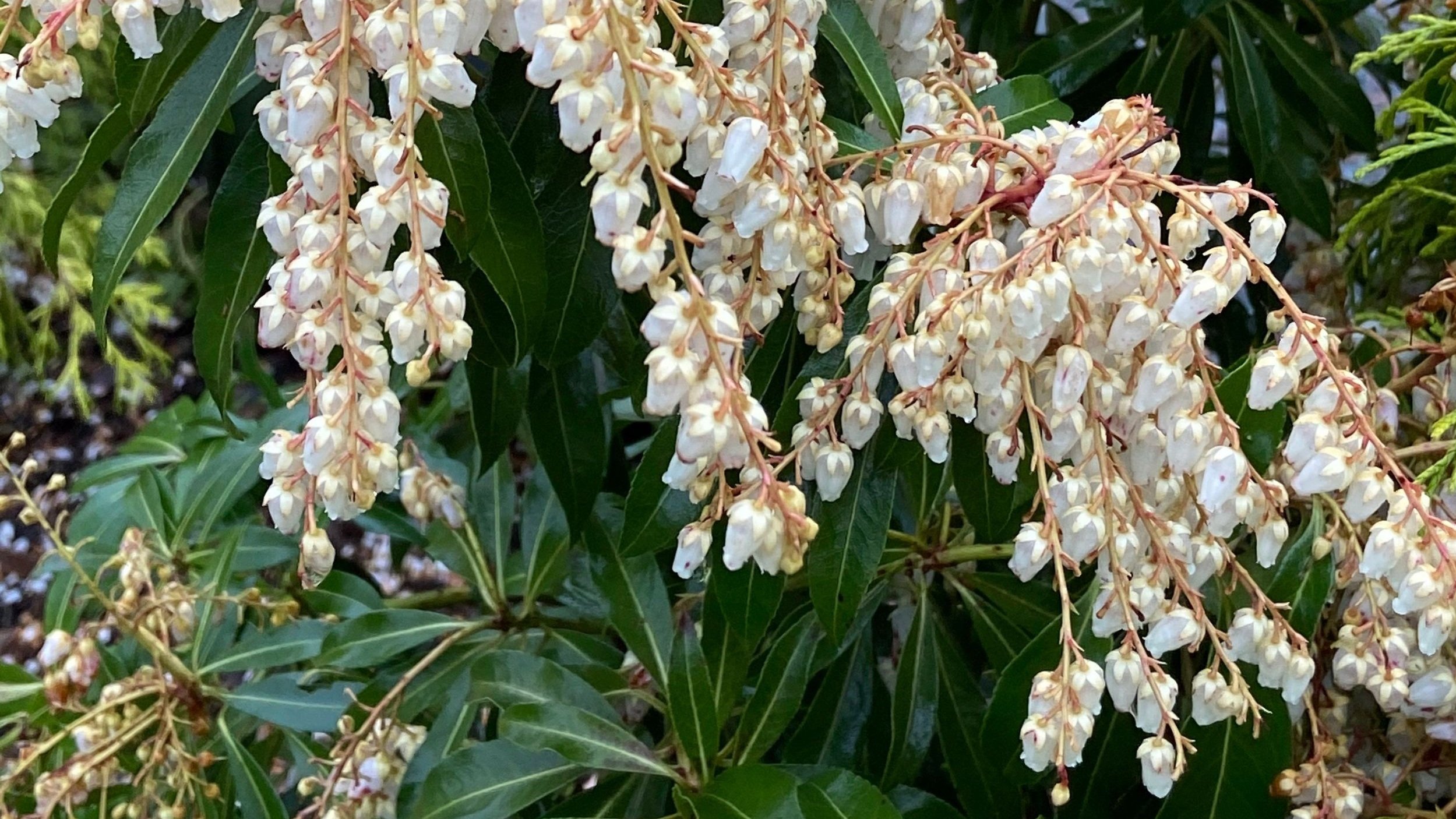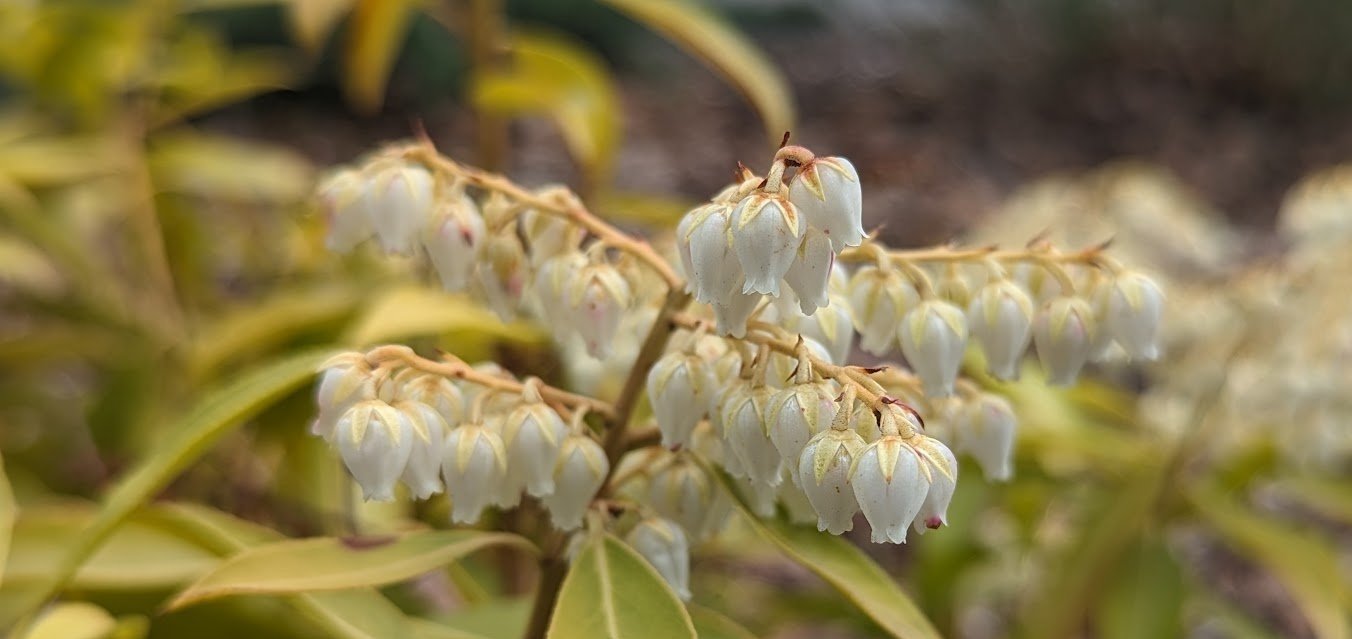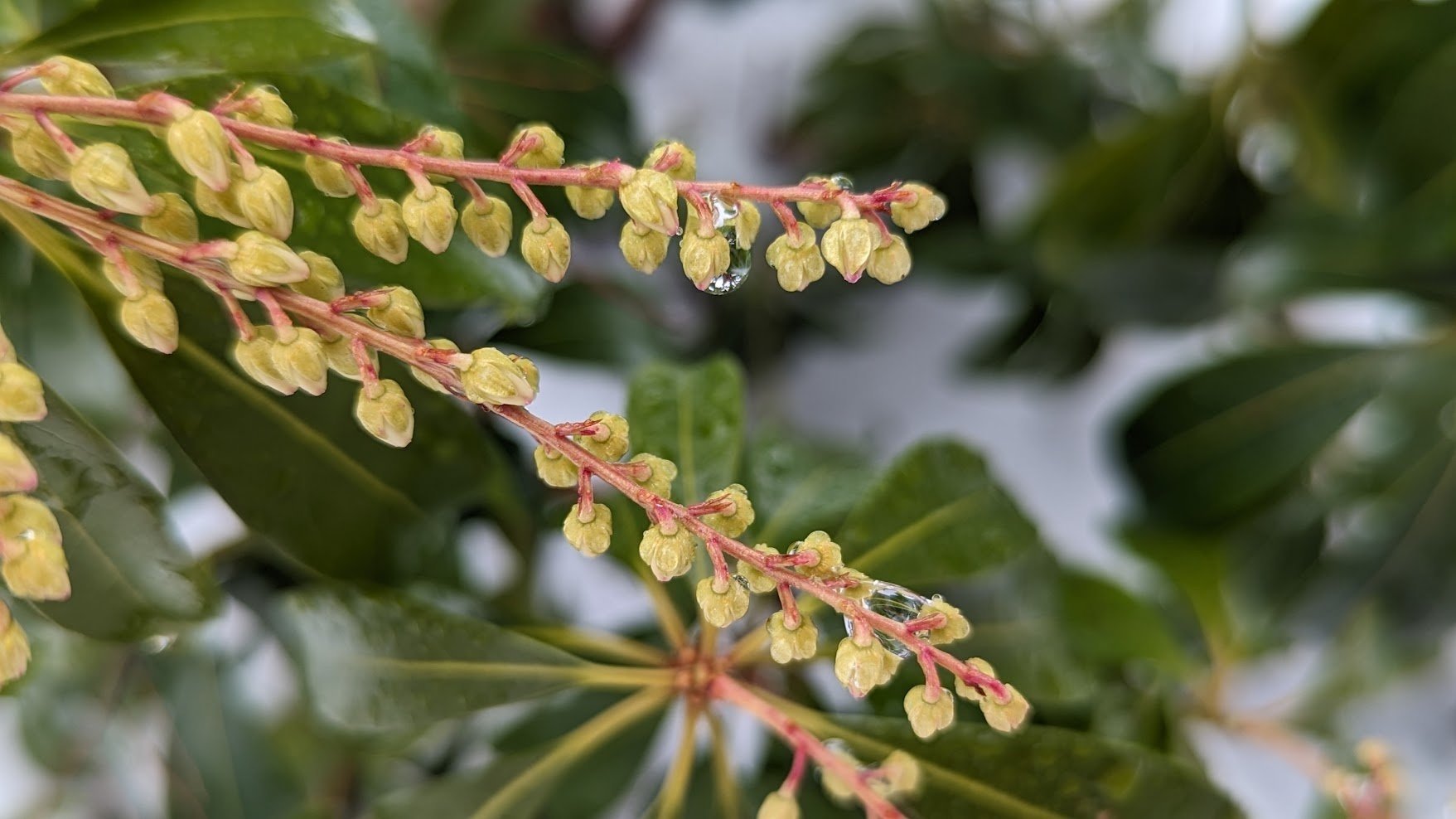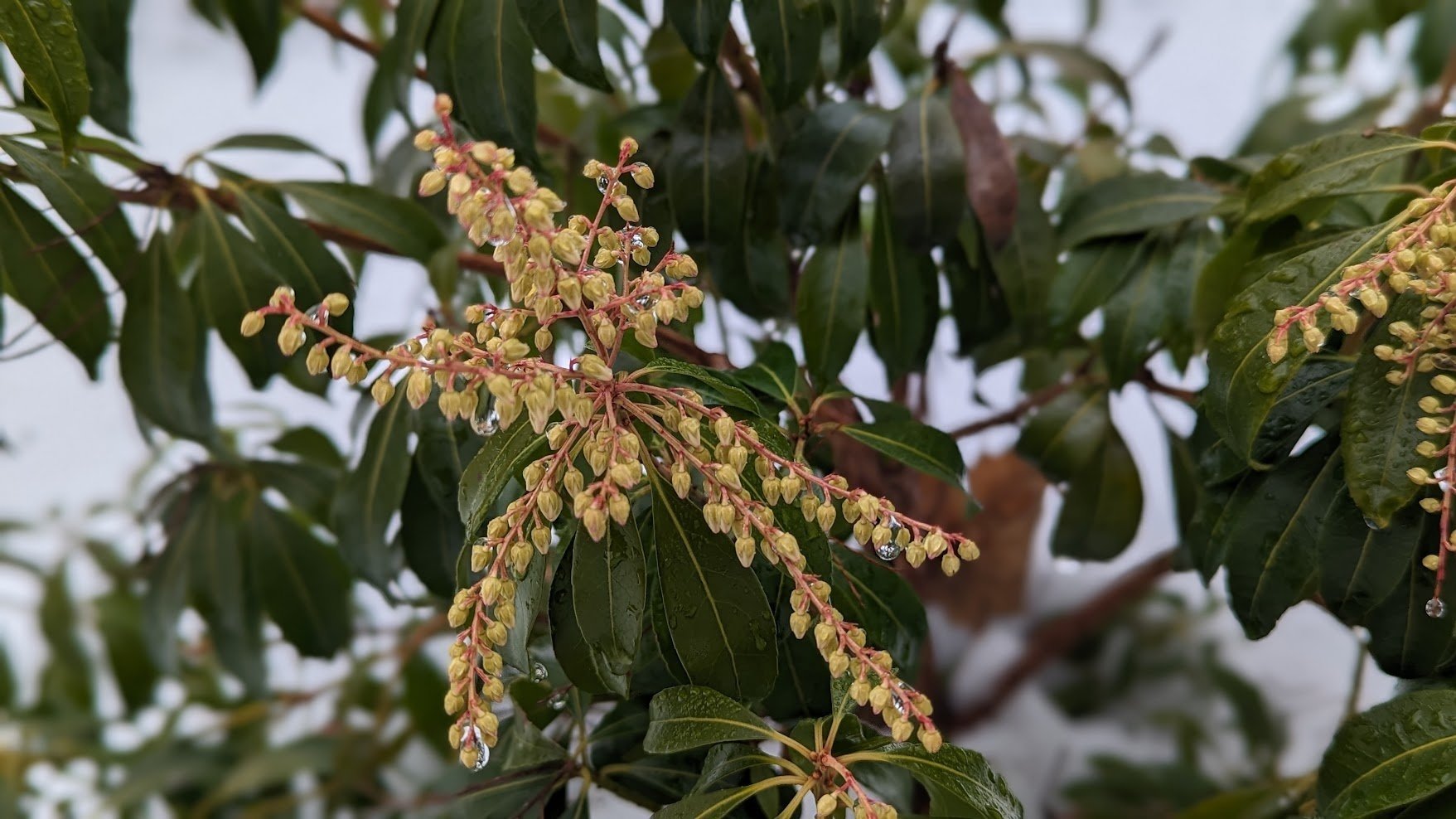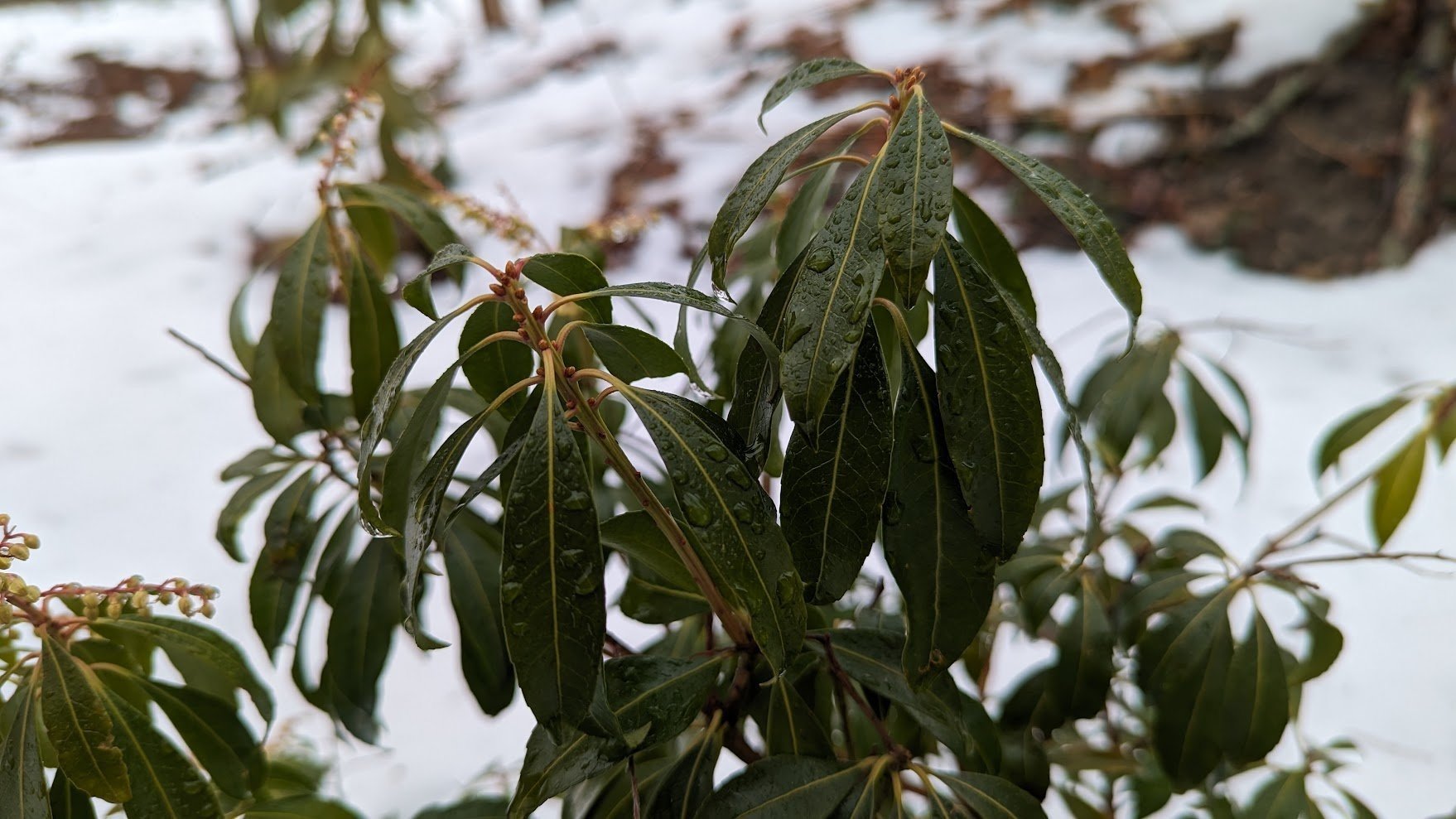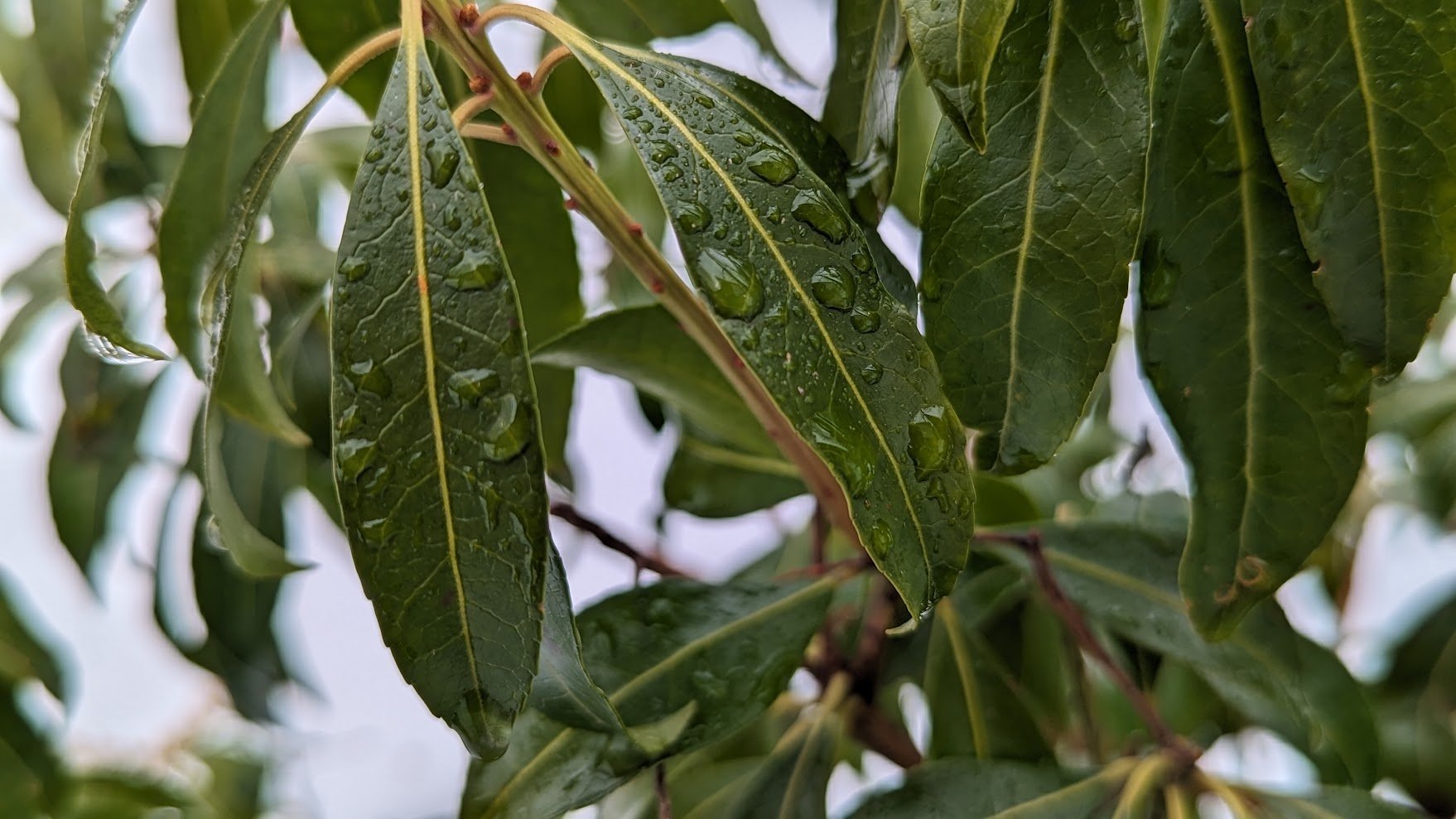PIERIS JAPONICA
(ANDROMEDA)
Pieris japonica is a broadleaf evergreen shrub that provides multiseason interest. In early spring, their cascading, delicate, bell shaped flowers bloom for about two weeks. The blooms range in color from white to pink. Simultaneously, bright pink, red, or bronze new foliage emerges, gradually transforming into glossy, oblong evergreen leaves. Beadlike flower buds form in late summer and hold steadfast through winter against their evergreen backdrop.
Deer resistant, slow growing and shade tolerant, Pieris japonica are ideal for adding year round color to mixed borders.
Pieris japonica in late winter
*********************
GROWING CONDITIONS & CARE
Pieris japonica are beautiful year round. They are easy to grow but need to be shielded from rough weather conditions, such as intense wind or rain and do not do well in soggy soil. Keep soil moist and well drained.
Growth: 9–12 ft. tall, 6–8 ft. wide, slow growing
Light: Sun, partial shade. In Martha’s Vineyard is can be treated as a full sun plant.
Soil: Prefers rich, acidic, moist but well-drained soil
Bloom Time: Late winter, early spring
Flower Color: White, pink
Deer resistant!!
Good choice for foundations and shrub borders
Smaller dwarf varieties can also be planted in containers
